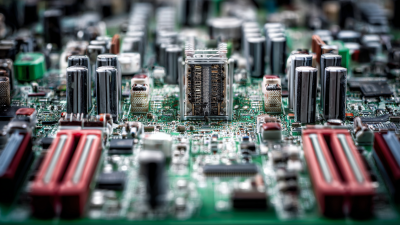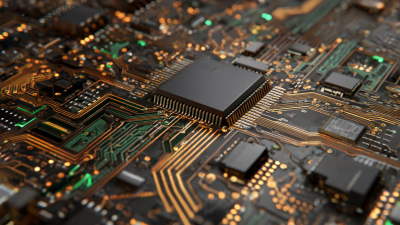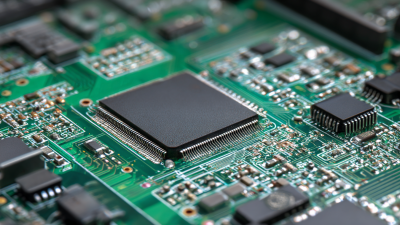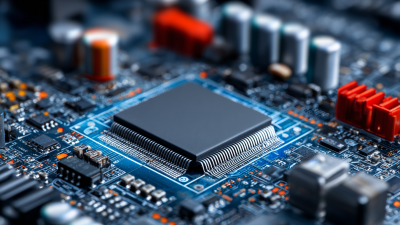In today's rapidly evolving technological landscape, the importance of printed circuit board assembly (PCBA) in optimizing global supply chains cannot be overstated. According to a recent report by Research and Markets, the global PCB market is projected to reach $85.37 billion by 2027, driven by the increasing demand across various sectors, including consumer electronics, telecommunications, and automotive industries. Effective PCBA not only enhances operational efficiency but also plays a critical role in reducing lead times and manufacturing costs, thus allowing businesses to remain competitive in a challenging environment. As companies continue to expand their operations on a global scale, understanding the pivotal role of PCBA becomes essential to streamline processes and ensure product reliability, ultimately leading to improved customer satisfaction and business success.

Printed Circuit Board Assembly (PCBA) plays a pivotal role in the global supply chain, particularly in facilitating seamless production processes. As industries evolve and technology advances, the demand for efficient and reliable circuit board manufacturing becomes ever more critical. PCBA not only provides a foundation for electronic devices but also enhances production efficiency, reduces lead times, and supports innovation. With major companies exploring avenues to enhance their manufacturing capabilities, outsourcing to specialized PCB manufacturers is becoming a strategic move to maintain competitiveness and adapt to market changes.
The integration of advanced fabrication techniques is revolutionizing the landscape of wearable technology, emphasizing the necessity for body-conformable electronics. As consumers increasingly seek devices that merge seamlessly with their lifestyles, the role of PCBA becomes even more pronounced. By leveraging cutting-edge design software and innovative assembly processes, manufacturers can create customized solutions that meet the unique demands of wearable gadgets. This adaptability not only streamlines production but also positions companies to lead in a rapidly evolving technological environment, demonstrating the indispensable nature of PCBA in driving forward the manufacturing ecosystem.

Printed Circuit Board Assembly (PCBA) plays a crucial role in enhancing product quality, particularly as the electronic industry evolves and expands. The growing emphasis on defect detection in PCB components highlights the necessity for effective assembly techniques. By integrating advanced technologies such as artificial intelligence in quality control, manufacturers can reduce errors and improve inspection processes, leading to higher-quality electronic products. AI-driven solutions enable real-time monitoring and faster classification of defects, ensuring that only the best components make their way into end products.
To optimize your PCB assembly processes, consider these tips:
In today's competitive landscape, cost efficiency in global supply chains is paramount, and high-quality printed circuit board (PCB) assembly plays a critical role in achieving this. According to a report by Smithers Pira, the global market for PCBs is expected to reach USD 83 billion by 2024, underscoring the increasing demand for reliable electronic components. High-quality PCB assembly can reduce production costs significantly by minimizing the risk of defects and rework, which can account for up to 30% of manufacturing costs in some sectors.
Furthermore, a study by IPC – Association Connecting Electronics Industries found that companies utilizing top-tier PCB assembly services reported a 25% reduction in lead times, allowing them to better manage inventory and respond to market demands swiftly. This efficiency not only helps in cutting costs but also enhances overall supply chain reliability, ensuring that products reach consumers in a timely manner. With the global market becoming more interconnected, the importance of investing in quality PCB assembly cannot be overstated, as it directly affects both cost and operational efficiency in the supply chain.
In today's competitive landscape, strong supplier relationships are vital for a resilient global supply chain, and integrated PCB assembly solutions play a crucial role in nurturing these connections. By streamlining communication and fostering collaboration, businesses can enhance their operational efficiency and responsiveness to market changes. The implementation of printed circuit board assembly not only simplifies production processes but also promotes transparency, enabling suppliers to anticipate demand fluctuations and plan accordingly.
Moreover, integrating advanced technologies like deep learning and machine learning into supply chain management further amplifies the benefits of PCB assembly. These technologies can assist in optimizing supplier selection, managing inventory effectively, and ensuring timely delivery of products. As a result, companies are better equipped to align their production strategies with market needs, minimizing waste and reducing costs. By prioritizing integrated PCB assembly solutions, organizations can build a robust supply chain network that enhances supplier relationships and supports sustainable growth.

As the global supply chain evolves, Printed Circuit Board (PCB) assembly stands at the forefront of innovation, driving significant advancements in various industries. With the rise of advanced manufacturing techniques, companies are embracing PCB assembly not only for efficiency but also for its ability to adapt to changing market demands. Future trends indicate that the integration of cutting-edge technologies like artificial intelligence and machine learning will revolutionize PCB assembly processes, enhancing production speed and accuracy.
Tip 1: Consider investing in automation tools within your PCB assembly processes. Automation can streamline operations, reduce lead times, and improve overall efficiency, making your supply chain more resilient amidst global uncertainties.
The semiconductor industry is also set for breakthroughs that will impact PCB assembly significantly. Innovations in advanced packaging and power components will enable manufacturers to create more compact and efficient electronic systems. As these technologies evolve, the demand for sophisticated PCB assemblies will increase, thereby shaping a more agile and responsive supply chain.
Tip 2: Stay informed about regulatory changes and technological advancements in PCB assembly. Being proactive can help your business adapt swiftly, minimizing disruptions and positioning you ahead of competitors in this rapidly advancing landscape.
| Reason | Description | Impact on Supply Chain | Future Trends |
|---|---|---|---|
| High Precision | Ensures components are accurately placed on PCBs. | Reduces defect rates and enhances product quality. | Advancements in automated assembly technologies. |
| Cost Efficiency | Reduces assembly costs through optimized processes. | Improves overall profit margins. | Innovations in material sourcing and waste reduction. |
| Scalability | Allows manufacturers to scale production up or down easily. | Enhances flexibility in meeting demand fluctuations. | Integration of smart manufacturing solutions. |
| Speed to Market | Accelerates the production cycle for new products. | Provides competitive advantage in rapidly changing markets. | Adoption of rapid prototyping technologies. |
| Innovation Support | Facilitates the development of new and innovative products. | Enhances the ability to compete in high-tech sectors. | Emerging technologies like 5G and IoT impacting PCB design. |
| Quality Assurance | Ensures consistent quality through rigorous testing protocols. | Minimizes recalls and enhances brand reputation. | Increased use of AI in quality control processes. |
| Supply Chain Transparency | Provides insights into the manufacturing process and sourcing. | Enhances collaboration and trust with partners. | Blockchain technology for real-time tracking and verification. |







